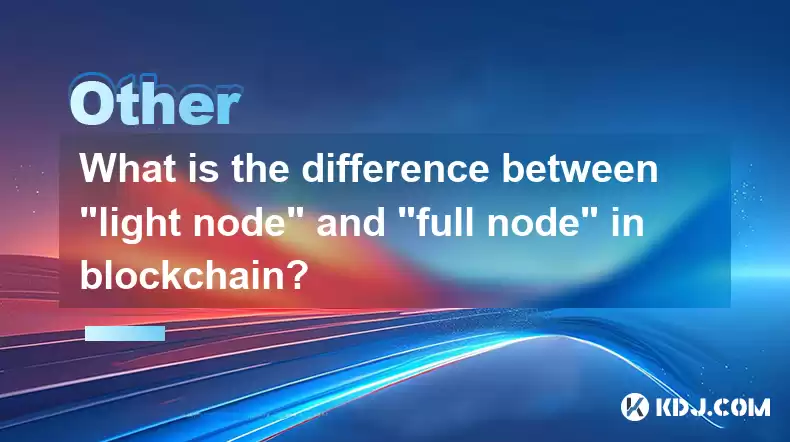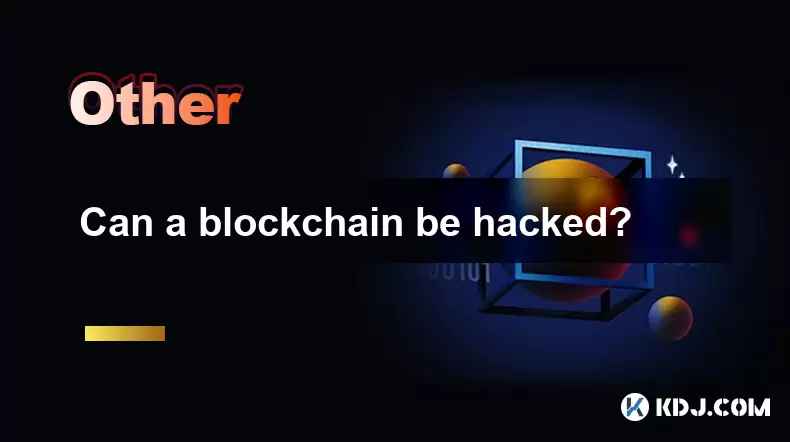-
 Bitcoin
Bitcoin $115000
0.12% -
 Ethereum
Ethereum $3701
4.50% -
 XRP
XRP $3.081
2.99% -
 Tether USDt
Tether USDt $0.0000
-0.01% -
 BNB
BNB $767.9
1.45% -
 Solana
Solana $169.5
3.13% -
 USDC
USDC $0.9999
0.01% -
 Dogecoin
Dogecoin $0.2106
4.30% -
 TRON
TRON $0.3334
1.62% -
 Cardano
Cardano $0.7564
2.54% -
 Stellar
Stellar $0.4165
0.76% -
 Hyperliquid
Hyperliquid $38.75
0.25% -
 Sui
Sui $3.593
3.00% -
 Chainlink
Chainlink $17.08
3.59% -
 Bitcoin Cash
Bitcoin Cash $573.6
4.35% -
 Hedera
Hedera $0.2508
-0.84% -
 Avalanche
Avalanche $23.07
6.46% -
 Ethena USDe
Ethena USDe $1.001
-0.02% -
 Litecoin
Litecoin $120.8
8.17% -
 UNUS SED LEO
UNUS SED LEO $8.943
-0.32% -
 Toncoin
Toncoin $3.400
-5.60% -
 Shiba Inu
Shiba Inu $0.00001255
1.54% -
 Uniswap
Uniswap $9.908
6.32% -
 Polkadot
Polkadot $3.718
2.10% -
 Monero
Monero $303.0
-0.74% -
 Dai
Dai $0.9999
-0.02% -
 Bitget Token
Bitget Token $4.392
0.91% -
 Cronos
Cronos $0.1403
6.31% -
 Pepe
Pepe $0.00001076
1.13% -
 Aave
Aave $267.2
1.80%
What is the difference between "light node" and "full node" in blockchain?
Full nodes maintain the entire blockchain, ensuring security and decentralization, while light nodes, with lower resource needs, rely on full nodes for transaction verification.
Mar 26, 2025 at 11:35 pm

Understanding Light Nodes and Full Nodes
The blockchain, at its core, is a distributed ledger. To participate in this network, you need a node – a software program that interacts with the blockchain. However, there are two primary types: light nodes and full nodes. These differ significantly in their functionality and resource requirements. Understanding these differences is crucial for anyone seeking to understand the inner workings of a blockchain network.
Full nodes, as their name suggests, maintain a complete copy of the blockchain's entire history. This means they download and store every single transaction ever recorded on the blockchain. This allows them to independently verify every transaction and block, ensuring the integrity of the network. This process requires significant storage space and bandwidth, making it resource-intensive.
Light nodes, conversely, only download and store a fraction of the blockchain's data. They don't store the entire transaction history. Instead, they rely on full nodes to verify transactions. They essentially act as clients, querying full nodes for the information they need. This makes them significantly less resource-intensive than full nodes.
The Role of Full Nodes in Blockchain Security and Decentralization
Full nodes are critical for the security and decentralization of a blockchain network. Because they independently verify every transaction, they act as a safeguard against fraudulent activities or attempts to manipulate the blockchain. The more full nodes there are, the more resilient the network becomes against attacks. A robust network of full nodes is essential for maintaining the trust and integrity of the blockchain.
Running a full node contributes directly to the decentralization of the blockchain. It reduces reliance on centralized servers or organizations, promoting a more distributed and resilient network. By running a full node, you are actively participating in the security and decentralization of the blockchain. However, the significant resource requirements often deter many users.
The Advantages and Disadvantages of Full Nodes
Advantages:
- Independent verification of all transactions.
- Enhanced security and resilience against attacks.
- Direct contribution to network decentralization.
- Complete control over your data and interactions with the network.
Disadvantages:
- High storage space requirements (can be terabytes).
- Significant bandwidth consumption.
- High computational power needed.
- Technical expertise may be required for setup and maintenance.
The Advantages and Disadvantages of Light Nodes
Light nodes offer a more accessible entry point into interacting with the blockchain. Their reduced resource requirements make them suitable for users with limited bandwidth or storage space.
Advantages:
- Low storage space requirements.
- Low bandwidth consumption.
- Easy to set up and maintain.
- Suitable for users with limited resources.
Disadvantages:
- Reliance on full nodes for transaction verification.
- Reduced security compared to full nodes.
- Limited control over the network.
- Potentially vulnerable to attacks on the full nodes it relies on.
How Light Nodes and Full Nodes Interact
Light nodes communicate with full nodes to verify transactions and access blockchain data. They send requests to full nodes, which then process the requests and return the necessary information. This interaction is crucial for the functionality of light nodes. The system relies on the honesty and availability of the full nodes. A lack of sufficient full nodes would compromise the reliability of the light node network.
Choosing Between a Light Node and a Full Node
The choice between a light node and a full node depends on individual needs and resources. Users with sufficient resources and a commitment to network security should consider running a full node. Users with limited resources or technical expertise may find light nodes more suitable. The decision should be based on a careful consideration of your technical capabilities and your commitment to the blockchain's decentralization.
Specific Blockchain Implementations and Node Types
It's important to note that the specific implementation of light and full nodes can vary across different blockchain networks. Some blockchains may have alternative node types or variations on the basic light/full node architecture. Always consult the documentation of the specific blockchain you're interested in for detailed information.
Frequently Asked Questions
Q: Can I run a light node on a low-powered device?
A: Yes, light nodes generally require significantly fewer resources than full nodes, making them suitable for low-powered devices like smartphones or Raspberry Pis. However, performance may still vary depending on the blockchain and the device's specifications.
Q: Are light nodes secure?
A: Light nodes are less secure than full nodes because they rely on the integrity of the full nodes they connect to. While generally secure, they are potentially vulnerable to attacks targeting the full nodes they depend on.
Q: Do I need to run a node to use cryptocurrency?
A: No, you do not need to run a node to use cryptocurrency. You can interact with the blockchain through exchanges, wallets, and other services that do not require you to run your own node.
Q: What are the benefits of running a full node?
A: Running a full node directly contributes to the security and decentralization of the blockchain. It allows for independent verification of transactions and enhances the network's resilience against attacks.
Q: How much storage space does a full node require?
A: The storage space required for a full node varies greatly depending on the blockchain. Some blockchains can require terabytes of storage, while others may require less. Always check the specific requirements for the blockchain you are interested in.
Q: What are the technical skills required to run a full node?
A: The technical skills required to run a full node vary depending on the blockchain and the chosen software. However, some level of technical expertise is generally needed for setup, maintenance, and troubleshooting. Some projects offer user-friendly interfaces to simplify the process.
Disclaimer:info@kdj.com
The information provided is not trading advice. kdj.com does not assume any responsibility for any investments made based on the information provided in this article. Cryptocurrencies are highly volatile and it is highly recommended that you invest with caution after thorough research!
If you believe that the content used on this website infringes your copyright, please contact us immediately (info@kdj.com) and we will delete it promptly.
- MYX Finance Price Surge: Is the Stock Jump Justified?
- 2025-08-05 18:30:12
- Crypto, CeFi, and Trust Gaps: Why the Issues Persist in 2025
- 2025-08-05 18:30:12
- Solana Memecoin Launchpads: A Wild Ride with LetsBONK.fun Leading the Charge
- 2025-08-05 17:30:12
- Crypto Volatility & Token Unlocks: Navigating the Storm
- 2025-08-05 16:30:13
- SUI Traders Eye Discount: Is Now the Time to Buy?
- 2025-08-05 16:30:13
- Bitcoin Price in August: Will the BTC Rally Continue?
- 2025-08-05 17:35:12
Related knowledge

What is the purpose of a nonce in mining?
Aug 04,2025 at 05:56pm
Understanding the Role of a Nonce in Cryptocurrency MiningIn the world of cryptocurrency mining, the term nonce stands for 'number used only once.' Th...

Can data on a blockchain be deleted?
Aug 05,2025 at 04:00am
Understanding Blockchain ImmutabilityThe core principle behind most blockchain systems is immutability, which means that once data is recorded onto th...

What is the difference between on-chain and off-chain transactions?
Aug 02,2025 at 04:22pm
Understanding On-Chain TransactionsOn-chain transactions refer to digital asset transfers that are recorded directly on a blockchain ledger. These tra...

How are blocks linked together?
Aug 04,2025 at 06:56am
Understanding the Structure of a BlockchainA blockchain is a decentralized digital ledger composed of a sequence of blocks, each containing a list of ...

Can a blockchain be hacked?
Aug 05,2025 at 08:29am
Understanding Blockchain Architecture and Security PrinciplesBlockchain technology is built on a decentralized and distributed ledger system that reco...

What is a node's role in a blockchain network?
Aug 03,2025 at 03:16pm
Understanding the Function of a Node in a Blockchain NetworkA node is a fundamental component of any blockchain network, acting as a participant that ...

What is the purpose of a nonce in mining?
Aug 04,2025 at 05:56pm
Understanding the Role of a Nonce in Cryptocurrency MiningIn the world of cryptocurrency mining, the term nonce stands for 'number used only once.' Th...

Can data on a blockchain be deleted?
Aug 05,2025 at 04:00am
Understanding Blockchain ImmutabilityThe core principle behind most blockchain systems is immutability, which means that once data is recorded onto th...

What is the difference between on-chain and off-chain transactions?
Aug 02,2025 at 04:22pm
Understanding On-Chain TransactionsOn-chain transactions refer to digital asset transfers that are recorded directly on a blockchain ledger. These tra...

How are blocks linked together?
Aug 04,2025 at 06:56am
Understanding the Structure of a BlockchainA blockchain is a decentralized digital ledger composed of a sequence of blocks, each containing a list of ...

Can a blockchain be hacked?
Aug 05,2025 at 08:29am
Understanding Blockchain Architecture and Security PrinciplesBlockchain technology is built on a decentralized and distributed ledger system that reco...

What is a node's role in a blockchain network?
Aug 03,2025 at 03:16pm
Understanding the Function of a Node in a Blockchain NetworkA node is a fundamental component of any blockchain network, acting as a participant that ...
See all articles

























































































